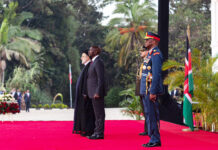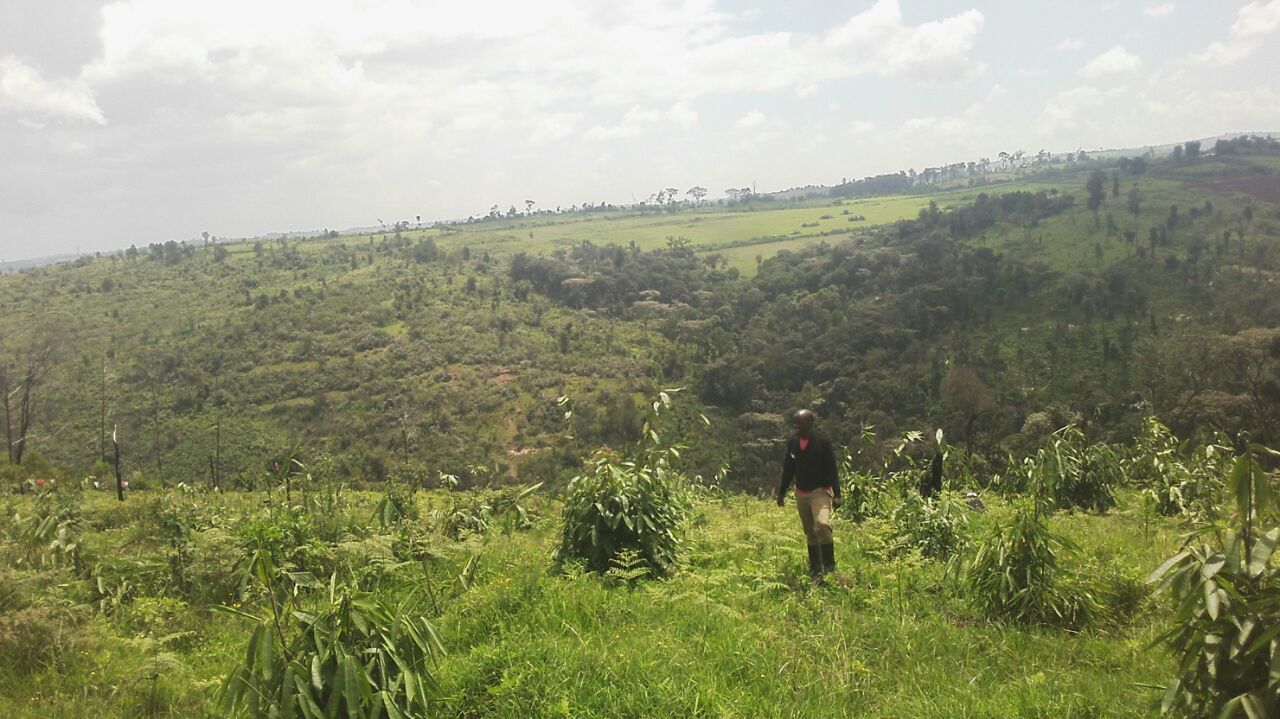|
Getting your Trinity Audio player ready...
|
By Lenah Bosibori
Nairobi, Kenya: Kenya’s heritage sites, from the renowned Fort Jesus in Mombasa to the ancient Gede Ruins, tell powerful stories about the country’s history, trade, fashion, food, wars, and rich traditions. However, rather than being well-preserved, many of these treasures are quietly disappearing due to poor record-keeping and mismanagement.
According to the 2024 Auditor General’s Report Conservation of Heritage Sites, five major heritage sites, namely Jumba la Mtwana, Rabai, Swahili House, German Post, and Mnarani in Kenya, have no inventory records at all.
According to the report, the five are manually stored in a manner that prevents the specific collections and their conditions within the site from being determined. Consequently, they may not be conserved. In the event of loss of collections due to theft or vandalism, it may not be possible to determine which specific object has been lost or stolen. It is also challenging to determine which fossils and objects have been excavated at the site.

The report, titled “Performance Audit Report on Conservation of Heritage Sites by the National Museums of Kenya”, warns that many artifacts have either disappeared, have no clear documentation, or are at risk of being stolen or sold without a trace.
“In the absence of inventory registers, the specific collections and their conditions cannot be determined,” the report says. “In case of loss or theft, it may not be possible to know which item went missing.”
Despite the lack of records, they still drew over 22,000 visitors in 2023. Jumba alone welcomed more than 17,000 guests. But without proper records, these visits may be dwindling as time goes by, according to the Annual Tourism Sector-Performance Report 2024
Some museums, like Lamu and Fort Jesus, have partial records. Others, like Kisumu Museum, don’t show where objects are located or what condition they’re in. In Gede, items are listed without any details.
At Fort Jesus, for instance, loan forms fail to show if borrowed artifacts were ever returned. In a recent interview with a local radio station, Ummi Bashir, Principal Secretary at the State Department for Culture and Heritage, said that some artifacts were taken as punishment for resisting colonial rule.
“We’ve been trying to bring them back,” she said. “We had a project supported by the German government that helped us trace some of them.”
“We came to find out that we have close to 32,501 artifacts that are out there in different museums in seven countries and also almost 30 institutions,” said Bashir.
Sites like the Gede Ruins and Lamu Fort are slowly deteriorating. Only 3 out of 30 major museums have digitized their collections. Without digital tracking, it’s difficult to determine what remains or what has already been lost.
Kenya’s weak documentation has opened the door for valuable artifacts to disappear quietly, ending up in private collections or foreign museums. The country is still trying to recover over 30,000 items taken during colonial times, when many were removed without consent or under shady circumstances.
“The challenge is that foreign laws protect these museums. You can’t just walk in and take back what’s ours,” Bashir explained. For example, the British Museum Act of 1964 prevents the return of items once they are in British possession.
On the other hand, the National Museums and Heritage Act (2016) sets out provisions for borrowing and lending national artifacts, requiring formal agreements detailing the terms of loan, protection, and return of the objects.
It also introduces a requirement for the Ministry of Culture and Heritage to issue licenses for artifacts leaving the country.
Wambugu Githaiga, Secretary General of the Mau Mau Governing Council of Kenya, says that when the colonialists left Kenya, they took many of the country’s valuable artifacts — including essential pieces such as Samoei’s head, ancient cooking sticks, and musical instruments that once united communities.
“We are requesting that these artifacts be returned so that future generations can understand where we have come from and where we are headed. It is important for our people to take pride in our heritage,” he said.
Githaiga also expressed concern about the current state of Kenya’s heritage preservation, citing corruption, poor documentation, and the mismanagement of museums as significant challenges.

“Many things that brought us together, like traditional songs sung during drought and rainy seasons, can no longer be found in our museums,” he added. “I urge the government to keep knocking on the doors of the former colonial powers to demand the return of our artifacts. If we get a chance to work together in unity, we can recover what rightfully belongs to us.”
According to reports, Germany’s Weltkulturen Museum alone holds about 870 Kenyan objects. But without clear records from Kenya’s side, it’s hard to know how these items were left or if the country was ever compensated.
According to Bashir, some of these artifacts were taken away as punitive measures to punish Kenyans for objecting to the colonial regime and rule. “When you punish me and you take the most important things to me as a community, I tend to bend and oblige. As a country, we have been trying to reclaim these assets,” Bashir said.
According to the International Inventories Programme (IIP), the Kenyan objects held by 30 institutions across seven countries represent data about cultural artifacts that were presumably taken from Kenya. This subtraction has profound impacts on the country’s cultural, societal, and personal histories.
Because IIP is a partnership effort, the emotional responses and historical perspectives vary, ranging from those of the National Museums of Kenya, a state institution, to those of European partners who may relate to the data as descendants of colonial powers.
Yet, there are no clear records of how these exchanges occurred. The process of acquiring the data was marked by digital negotiations and cordial interactions, which often masked the darker history they represent.
The resulting database exposes troubling inconsistencies. Some museums refused to share any data, while one submitted records with crude deletions of provenance information.
In 2021, the National Museums of Kenya (NMK) hosted the “Invisible Inventories” project, a collaboration between Kenyan and European institutions initiated by the IIP, a collective of researchers, artists, and museum professionals.
It used empty glass cases to show just how much has been lost. While this raised awareness, little progress has been made in actually recovering stolen items because foreign laws protect these museums, according to Bashir.
The National Museums and Heritage Act of 2006 requires proper record-keeping, but weak enforcement has allowed Kenya’s cultural wealth to disappear piece by piece.
Meanwhile, tourism is growing. Kenya recorded 1.1 million visitors to museums and heritage sites in 2023, representing a 30 per cent increase from the previous year. But even with more visitors, revenue dropped by 8 per cent. Why? Fewer foreign tourists. Locals, who pay lower rates, now make up the majority of visitors ( Annual Tourism Sector-Performance Report 2023).
In 2024, international arrivals rose to 2.4 million, earning the country Kshs. 452.20 billion, a 20 per cent increase from the previous year. Heritage visits were the main reason for travel, making up 44 per cent of visits.
But despite this interest, most of our cultural assets remain vulnerable. Digitization is slow, with only three out of 30 museums being fully digitized. Most still rely on handwritten records, making it easy for artifacts to go missing without a trace.
Kenya’s museums have some policies and mechanisms to trace artifacts, mainly under the National Museums and Heritage Act (2006). These include registration of heritage items, permits for excavations, and internal record systems. NMK is also digitizing 180,000 heritage pieces and 450,000 records.
However, tracing artifacts is still weak due to incomplete digitization and outdated inventory tools, limited staff and funding for heritage management, poor enforcement of heritage protection laws, low prioritization of cultural heritage in policy, and lack of coordination between customs, police, and the NMK.
Joyce Kinyanjui, a manager at NMK, states that they are working to rectify this issue. “Once it’s complete, these records will be open to the public,” she said.
The slow pace is blamed on a lack of funding, poor planning, and limited technical know-how. The gap between Fort Jesus and the Malindi Museum highlights the significance of this matter. Malindi keeps careful records, tracking when items are loaned out, when they are returned, and their condition. Fort Jesus doesn’t.
Even worse, some historic pieces like cannons and cart rails at Fort Jesus are left exposed to the elements. In contrast, Malindi’s items are better preserved due to proper care.
The Cost of Neglect
The 2024 Auditor General’s Report should be a wake-up call. Kenya is at risk of losing artifacts and the stories, memories, and pride they carry. These are more than just museum pieces—they are a part of who we are.
Government programs are underway. Under the Bottom-Up Economic Transformation Agenda, Kenya plans to:
- Fast-track cultural bills;
- Train 6,000 women in beadwork through the Ushanga Kenya Initiative;
- Build a Ushanga Mall in Narok.
- Digitize 180,000 heritage pieces and 450,000 records.
Kenya’s Progress on Cultural Heritage and Economic Empowerment:
Over 100 women in Kajiado underwent training in March 2025 to commercialize traditional beadwork, aiming to turn cultural skills into sustainable income sources.
A dedicated digital platform known as ushangakenya.co.ke has been set up, enabling artisans to sell beadwork locally and internationally, reducing reliance on middlemen.
Financial support for the initiative rose significantly from KSh 38.6 million in 2021 to KSh 95.9 million in 2023, according to Kenya’s National Budget Ushanga Initiative.
Legislative Push
Plans are underway to convert Ushanga into a state corporation, which will offer legal protection for artisans’ intellectual property and ensure fair product pricing.
Ummi Bashir says the state is also training youth champions in the counties to document cultural practices. “We want our cultures to be alive 100 years from now,” she said.
But without better documentation, strong policies, and support from international partners, Kenya’s heritage will continue to slip through the cracks.
“We are trying to get the British Museum Act of 1964 repealed by using the Members of Parliament to see how we can get them back and repeal this act,” said Bashir. “That aside, the other day I was in Britain and we were trying to get some documents from the archives and we saw many things that had been erased or covered to make it look like the British did not do certain things prehistorically in Kenya.
“And unless that act is repealed and unless that act is changed, there’s nothing we can do,” she adds.
CREDIT: “The project received support from the Thomson Reuters Foundation through the Media Foundation for West Africa as part of its global work aiming to strengthen free, fair and informed societies. Any financial assistance or support provided to the journalist has no editorial influence. The content of this article belongs solely to the author and is not endorsed by or associated with the Thomson Reuters Foundation, Thomson Reuters, Reuters, nor any other affiliates.”














